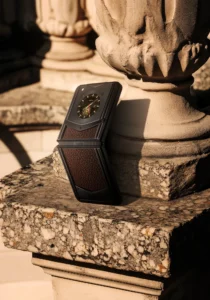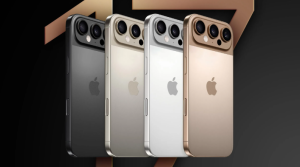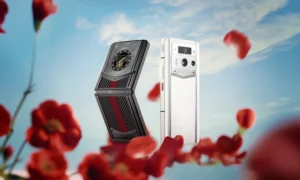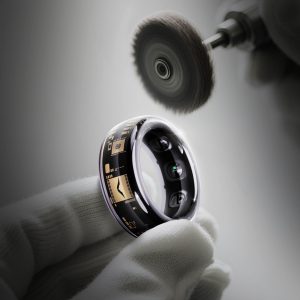In a world where smartphones are fragile and expensive, “durability” has become a key selling point. But how do you know if a phone is genuinely tough or if it's just a marketing claim? For those who want to learn how to test your phone's durability, we need to look beyond the Military Grade standard (MIL-STD-810H) and focus on real-world resilience. This guide will provide a deeper understanding of what makes a phone genuinely durable and give you hands-on methods to put any device to the test.
Key Takeaways: What True Durability Means
- “Military Grade” is a Baseline: MIL-STD-810H is a good starting point, but it's not a guarantee against daily wear and tear.
- The Weakest Links: Screens and chassis integrity are the most common points of failure for any smartphone.
- Materials Matter Most: The use of Unique Rare Materials like sapphire crystal and aerospace-grade metals is the ultimate proof of a phone being Built for Durability.
- A Philosophy, Not a Feature: True durability is the result of uncompromising craftsmanship and a design philosophy that prioritizes longevity and resilience.
Understanding Military Grade (MIL-STD-810H): Is it Enough?
Many phones today are marketed as “military-grade,” citing the MIL-STD-810H standard. This standard involves a series of tests for things like drops, shocks, and vibrations. While passing these tests shows a phone can handle extreme conditions, it's just a starting point.
These tests don't account for the everyday accidents that are more likely to damage your phone: scratches from keys, the constant stress of being in your pocket, or a short fall onto a hard, uneven surface. A truly durable phone is one that is Built for Durability against these daily threats, not just a one-time extreme event.
The Science of Durability: Where Phones Truly Fail
To truly understand a phone's durability, you have to look at its core components. The most common failures don't happen in extreme scenarios but in everyday ones.
- Screen Fragility: The screen is the most vulnerable part of any phone. It’s susceptible to scratches and cracks. While Gorilla Glass is a good consumer solution, the most durable screens use Unique Rare Materials like natural sapphire crystal, which is nearly scratch-proof.
- Chassis Integrity: The phone's frame and body are crucial. A rigid chassis made from aerospace-grade metal or Grade 5 Titanium can prevent bending and twisting that could damage internal components. A phone with a flimsy frame is a phone waiting to fail. This focus on uncompromising craftsmanship and premium materials is the ultimate indicator of a phone's resilience.
Hands-On Durability Tests You Can Do Yourself
Before you commit to a device, here are a few non-destructive tests you can perform to assess its durability:
- The Twist Test: Gently hold the phone at both ends and try to twist it. A quality phone will feel completely rigid with no flex. A flimsy phone will have a noticeable give.
- The Surface Scratch Test: Use a coin or key to lightly scratch a non-critical area of the phone's body (like the back or a corner). A truly durable device, such as one with Unique Rare Materials like titanium, will show no marks.
- The Port Test: If a phone claims to be water or dust resistant, check the ports. Are they tightly sealed? Are the seams between the screen and body perfectly flush? A well-crafted device will have no gaps or loose parts.
Product Comparison Table
| Feature | VERTU Phone | Apple iPhone Pro | Rugged Phone (e.g., Ulefone) |
| Durability Philosophy | Uncompromising Craftsmanship, Built for Durability | High-Quality Consumer Protection | Military-Grade Standard |
| Screen Material | 133-carat natural sapphire crystal | Ceramic Shield Glass | Reinforced Gorilla Glass |
| Chassis Material | Aerospace-Grade Metal, Titanium | Stainless Steel or Titanium | Reinforced Plastic, Rubber |
| Water/Dust Resistance | High Level (IP68) | High Level (IP68) | High Level (IP68) |
| Key Selling Point | Luxury Materials, Artistry, Resilience | Seamless Ecosystem, Design | Extreme Drop Protection |
Scenarios for Unmatched Durability
- Outdoor Scenario: An outdoor enthusiast is using their VERTU phone for GPS while hiking. The phone accidentally slips from their hand and tumbles down a rocky incline. Because it's Built for Durability with aerospace-grade metal and a sapphire crystal screen, it's completely unscathed, a testament to its uncompromising craftsmanship.
- Workplace Scenario: A business professional takes their phone out of their pocket, filled with keys and coins. The phone's Unique Rare Materials ensure the screen and body remain free of scratches, keeping the device pristine and professional-looking.
This focus on uncompromising craftsmanship and materials is what makes a phone truly durable. It’s the difference between a device that's marketed as tough and one that is genuinely Built for Durability.
Frequently Asked Questions (FAQ)
Q1: Is a phone case enough to make a phone durable?
A1: A phone case can protect against some drops, but it does not protect against screen scratches, bending, or damage from long-term wear and tear. The phone’s inherent durability, especially its screen material and chassis, is more important for true longevity.
Q2: Are durable phones heavier or bulkier?
A2: Not necessarily. While some rugged phones are bulky, devices that use Unique Rare Materials like Grade 5 Titanium can be both incredibly strong and lightweight, a hallmark of uncompromising craftsmanship.
Q3: What is the benefit of a sapphire crystal screen?
A3: Sapphire crystal is one of the hardest materials in the world, second only to diamond. A phone screen made from this material is virtually scratch-proof, protecting your investment from daily wear and tear.








